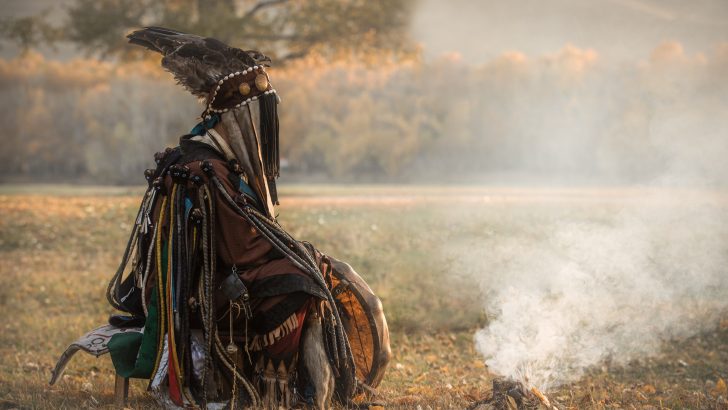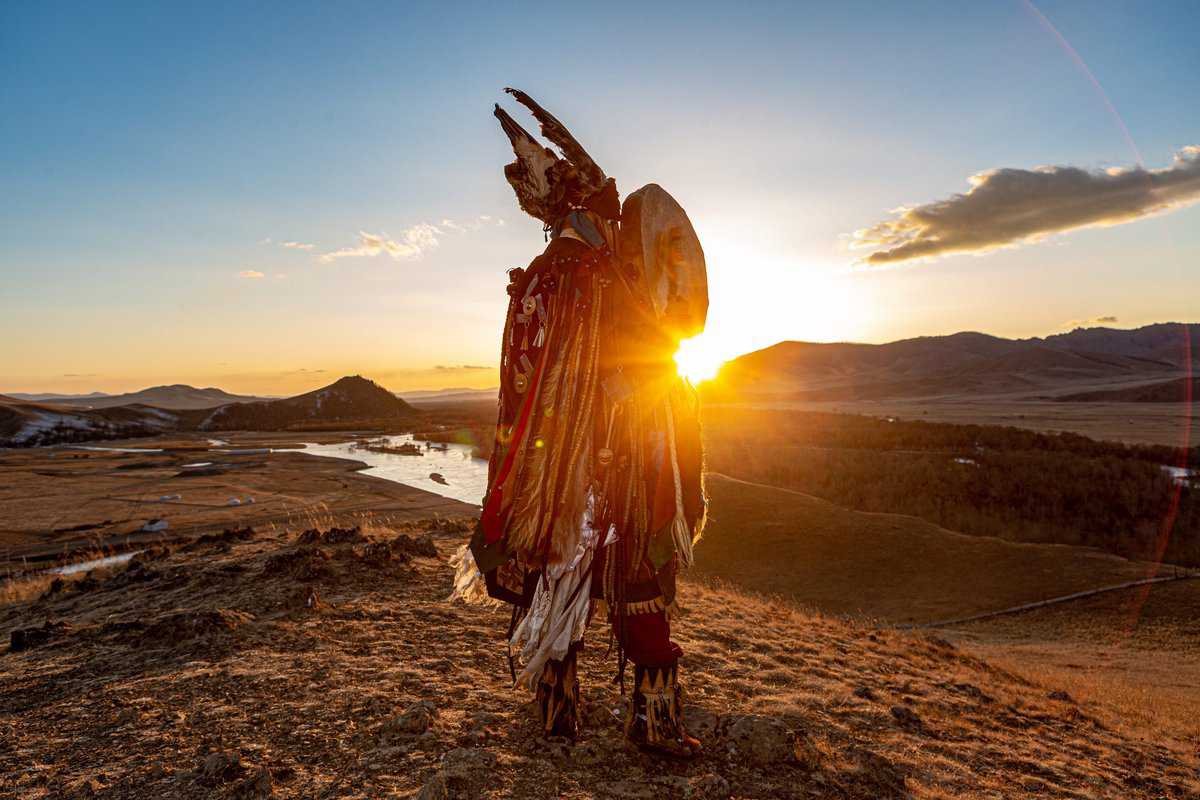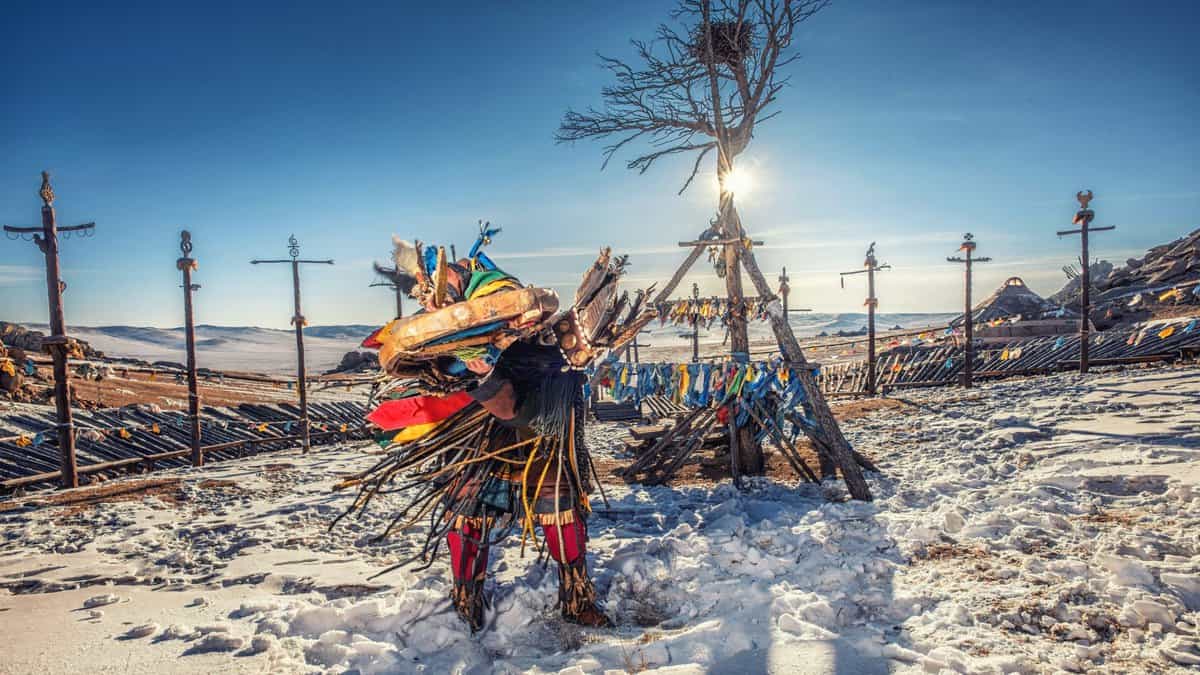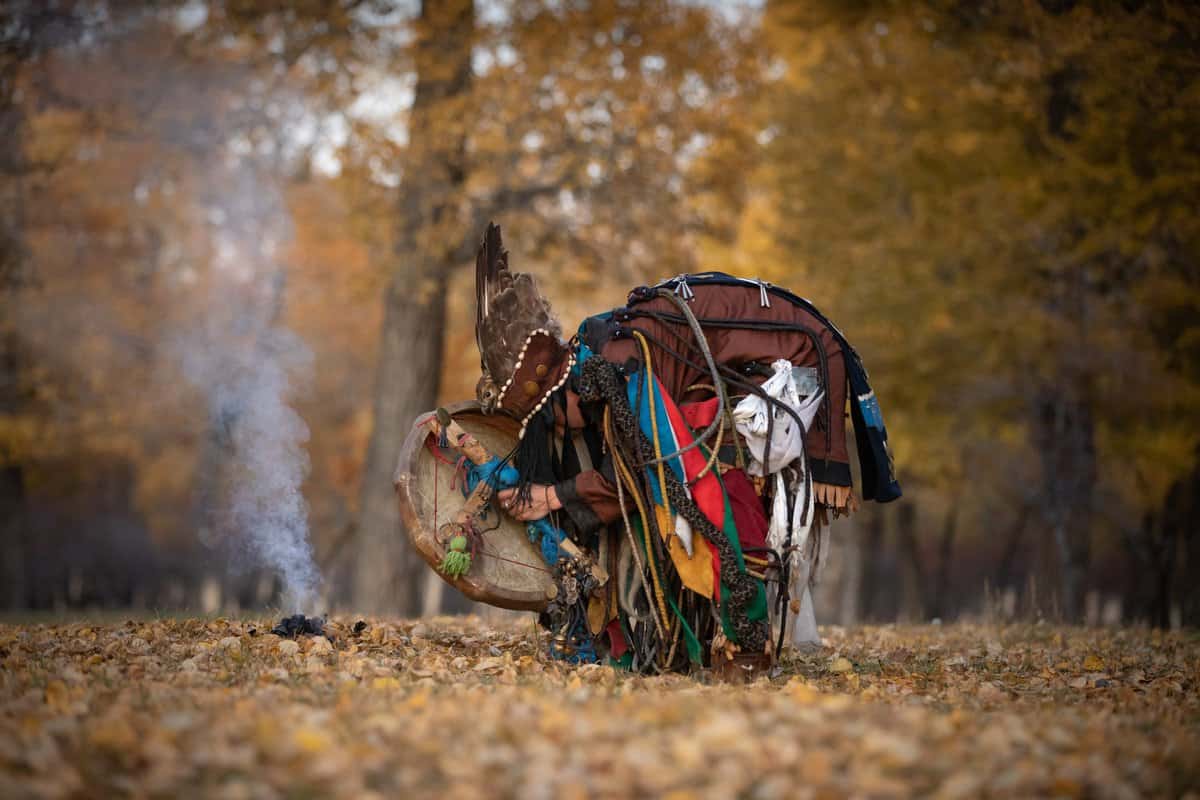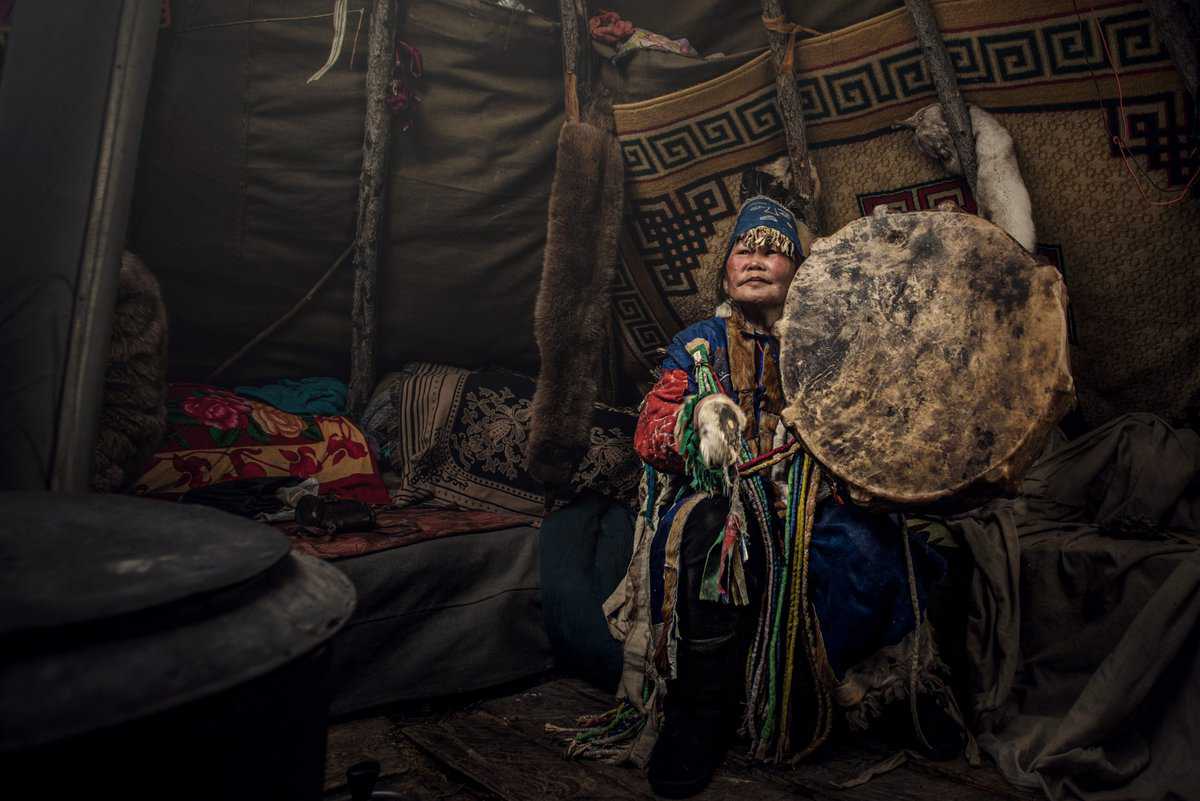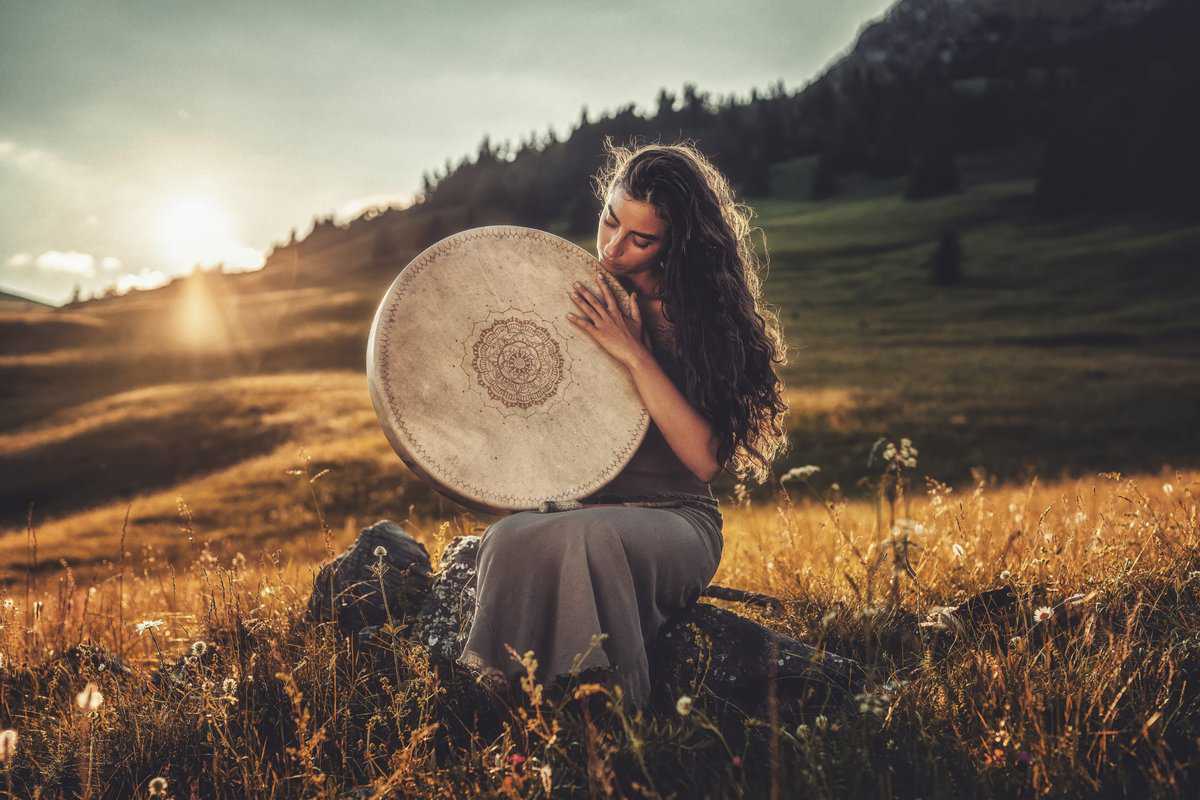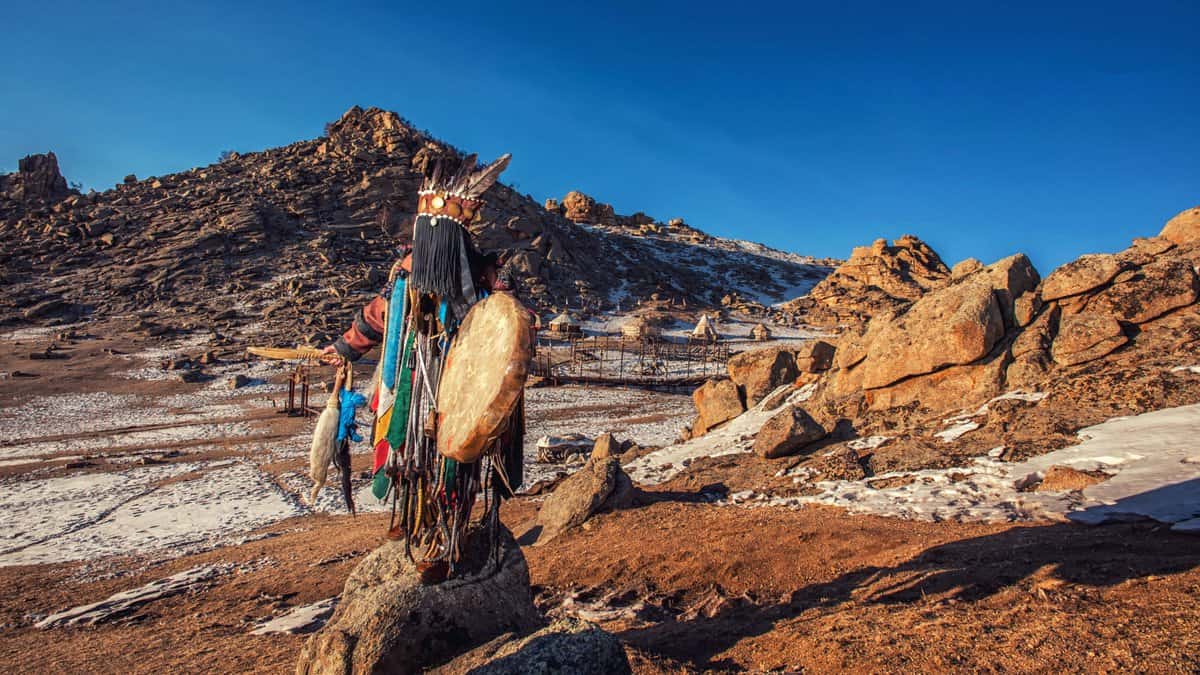Mongolian shamanism is ingrained in the very soil of the vast Mongolian steppes.
Studying the nomadic traditions of the Mongolian people reveals a history rich in spiritual rituals, practices, and ceremonies. What mysteries lay hidden in their ancient beliefs?
Mongolian shamanism dates back to 300 to 400 BC, making it one of the oldest spiritual traditions. Throughout history, it has branched out, evolved, transformed – and persisted.
What were Mongolian shamans like? Are they still around today?
What tools did they use, and what rituals did they practice?
Here’s everything you need to know about Mongolian shamanism – and more.
What Is Mongolian Shamanism?
Mongolian shamanism has been around for a while – and that’s putting it lightly.
It has endured since ancient times, adapting to the world’s ever-changing climate.
Shamanism in Mongolia – like most shamanic cultures – revolved around healing, religion, and spirituality, nourishing a connection with nature and ancestral spirits.
In other words, shamans were guides, healers, teachers, and, sometimes, even leaders.
Mongolian shamanic rituals thinned the veil between the material and the spiritual world.
Nevertheless, their practices encompassed so much more than that.
Mongolian shamanism and Buddhism share a meaningful connection worth exploring.
Examining the practiced rituals and the upheld beliefs shows a harmonious coexistence between the two synergized spiritual paths, elevating each other to a higher mystical plane.
They intertwine to create a unique blend of sacred and ancient traditions.
Ancestral reverence plays a crucial part in understanding their shamanic culture.
Until the 1930s, a widespread veneration of Genghis Khan was manifested through the construction of statues and temples across the nation, showing the meaning of ancestry.
Because of this, accessing the spirit world was always an inseparable part of their culture.
Through this spiritually created connection, shamans consulted the spirits for wisdom and guidance, using their insights to help their communities rise to a higher state of being.
From Northern Mongolia to Western Mongolia – their land brims with spiritual energy.
The footprints of bygone shamans echo across the nomadic planes.
Today, many travel to Mongolia and embark on adventure tours to learn more about their shamanic cultures and traditions. The vast and cold Gobi Desert is a famous attraction.
But what did these ancient shamanic practitioners believe in?
What Do Mongolian Shamans Believe In?
Mongolians worship and revere spirits and ancestors.
Communicating with spirits is an integral part of their religion – and shamanism.
Shamanism allows them to establish contact with the spiritual realm, thinning the veil.
Shamans can receive wisdom and guidance from the other side through this connection.
Besides ancestral reverence – Mongolians worship the ‘Father Sky’ known as ‘Tenger’ or ‘Qormusta Tengri.’ Genghis Khan was considered an embodiment of the Tenger spirit.
Shamans would often communicate with the ‘Father Sky,’ seeking blessings.
Various rituals and practices focused on establishing a connection with the ethereal realm.
Honoring the divine presence was an integral part of their day-to-day lives.
And this is true for all Mongolians – not just shamans.
The enduring nature of shamanism in this region can be attributed to the dedication to worship and communication with the spirit world, creating links that transcend time.
Other than that, Mongolians believe in the power of nature.
Therefore, a Mongolian shaman respects the natural world around them – harnessing its gifts for the greater good. In Mongolia, shamans use herbs and plants for their healing.
Most of their time is spent outdoors, close to mountains, rivers, and under the open sky.
It’s where they practice rituals, immersing themselves in the nature’s energy.
Curious about their beliefs compared to other shamanic cultures? Learn more here:
Despite their similarities, each branch of shamanism is unique.
The more you understand the differences – the deeper your knowledge. The more you’re prepared to embark on a shamanic journey through mystical realms and rich histories.
What Do Mongolian Shamans Practice?
In Mongolia, shamanic rituals are practiced in numerous ways.
But there’s one ritual aspect that stands out more than the rest. That’s the use of drums.
Drumming pokes a hole in the spiritual realm, letting energy course free. It creates an atmosphere that aids in focusing the shaman’s intent and connecting with the spirit world.
And it does more than help the shaman – it benefits every present soul.
Drums are a commonly used shamanic tool due to their spiritual vibrancy.
The rhythmic beats thin the veil and channel sacred energy, warding off evil spirits.
However, Mongolian people use drums while dancing in symbolic patterns, inducing trance states and altering consciousness by chanting and journeying into spirituality.
Through these practices, shamans can gain otherworldly insights and healing energies.
Beyond that, ancestral reverence is inseparable from the Mongolian people and shamans.
Their rituals involve communicating with departed relatives and seeking their wisdom and guidance. Shamans reach far into the past, surpassing the limitations of time and space.
What’s remarkable about the Mongolian people is that they practice their ceremonies in sacred landscapes, such as mountains and rivers – using them to harness spiritual energy.
Therefore, it’s no surprise that herbs and plants – the gifts of nature – often accompany their practices with various purposes. Sometimes, it’s to heal. Other times, to transcend.
Either way, their connection with nature helps them establish balance and harmony.
One aspect we haven’t reflected upon yet is the presence of symbolism in Mongolian culture – especially animal symbolism. To them, animals are spiritual guides and teachers.
Mongolian shamanism is rich with symbols that convey meaningful messages.
They often portray animals to enhance the shaman’s ability to navigate the spiritual realm and establish contact with ancestral spirits for deeper understanding and self-awareness.
Mongolian shamans encompass numerous practices – but do they still exist today?
Does Mongolian Shamanism Still Exist?
Yes, Mongolian shamanism is still alive and kicking, practiced in various communities across the vast steppes of Mongolia. Many go to Mongolia to travel and learn about it.
Mongolia has a rich history of conflict, challenges, and political changes.
Nevertheless, the sacred traditions of shamanism endure and persist.
It’s not something that can be easily – if at all – uprooted. Especially today since there has been a revival of interest in Mongolia about preserving shamanism and invigorating it.
More than that, outsiders have begun taking an interest in their shamanic ways.
People travel to Mongolia to learn about shamanism and even Buddhism. Mongolian religion is influenced by Buddhism, which has coexisted alongside shamanic rituals.
One uplifts the other and vice-versa, creating an intricate web of spirituality.
Throughout history, some families have upheld and sustained the tradition of shamanism, passing down the knowledge and practices from one generation to the next – preserving it.
This new revival in interest affects urban areas, too – not just the wide-open steppes.
People are curious about shamans. They seek to break free from the modern world.
They seek out shamans for guidance, healing, and various other reasons.
In a way, this ties in with the rise of New Age spirituality.
New practitioners of shamanism combine rituals with contemporary elements, aware of the changing landscape. Shamanism continues to evolve alongside the changing world.
And this isn’t exclusive to Mongolia or its traditions.
Shamanism persists throughout the world, highlighting the need for spirituality.
Can You Become a Mongolian Shaman?
If you’re curious about shamanism and Mongolian culture – the question might cross your mind: can you become a Mongolian shaman? If so, how? What does it take to be one?
To answer the question: no, you can’t become a Mongolian shaman.
There are a few ways to become one, and they’re very non-inclusive.
For one, you must be born into it or receive a calling from ancestral spirits.
So, if you’re an outsider wanting to become a shaman – that door’s closed, and no ritual can open it. It’s a deeply ingrained cultural experience exclusive to the Mongolian people.
That being said, it’s not all gloom and doom.
You can still visit Mongolia, go on tours, and attend a shamanic ritual or practice.
If you travel to Mongolia, respect their traditions. They’re not practiced for your or anyone’s entertainment. They’re practiced to connect with ancestral spirits and guides.
Even though you can’t become a Mongolian shaman – you can still learn from them.
You can use their sacred knowledge and incorporate it into your spiritual life.
After all, the term ‘shaman’ has evolved into a more modernized version.
Anyone can become a modern-day shaman and embark on their spiritual journey.
And there’s no experience as unique as witnessing these ancient rituals and practices.
It’s a meaningful opportunity to expand your self-knowledge and nourish the soul.
In Conclusion
Mongolian shamanism is a culturally rich spiritual practice that withstands the test of time.
In Mongolia, these age-old rituals and practices exist – even today.
Every shaman reverently upholds the centuries-old traditions that precede them.
Nevertheless, visiting Mongolia and going on tours is open to everyone. If you wish, you can attend their practices and ceremonies and experience how they connect with spirits.
Even though you can’t become a Mongolian shaman – it can still uplift your soul.
Mongolia is a big country with historical roots that stretch deep into the annals of time.


Painting and writing – these are two passions that I have been perfecting for a decade. I’m passionate about exploring the connections between the stars and numbers. Through insightful articles you can learn how these ancient practices can offer guidance, clarity, and self-discovery.

